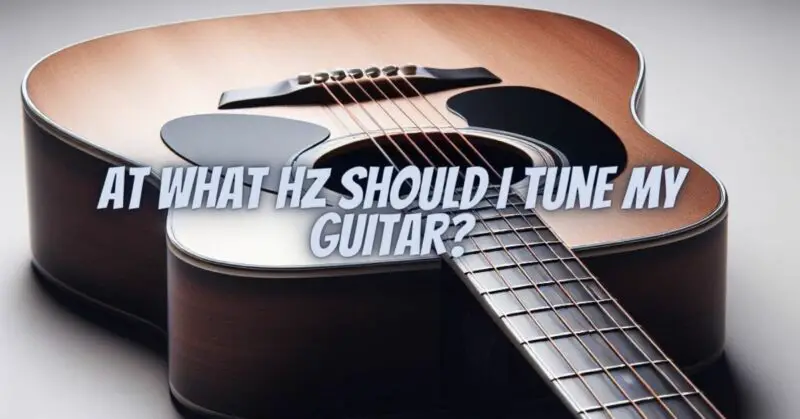Tuning your guitar is the essential foundation for producing harmonious and enjoyable music. The choice of pitch standard, often represented in Hertz (Hz), significantly affects the sound and playability of your instrument. In this comprehensive article, we will explore the various tuning standards and their corresponding Hz frequencies, helping you make an informed decision about what Hz to use when tuning your guitar.
Standard Tuning A440 Hz
The most widely accepted and commonly used tuning standard for guitars is A440 Hz. In this standard, the A4 string is tuned to vibrate at 440 cycles per second (Hz). The rest of the strings are then tuned relative to this reference pitch, creating a standard tuning that is familiar to most guitarists:
- 6th String (Low E): 82.41 Hz
- 5th String (A): 110.00 Hz
- 4th String (D): 146.83 Hz
- 3rd String (G): 196.00 Hz
- 2nd String (B): 246.94 Hz
- 1st String (High E): 329.63 Hz
Alternative Tunings and Hz Frequencies
While standard tuning is the norm, there are various alternative tunings that musicians use to achieve specific sounds and styles. Each of these tunings has a corresponding reference pitch. Here are a few examples:
- Dropped D Tuning (DADGBE): In this popular alternative tuning, the 6th string (Low E) is lowered to D, resulting in the following frequencies:
- 6th String (Low D): 73.42 Hz
- Half-Step Down (Eb Ab Db Gb Bb eb): Tuning all strings down by one half-step creates a slightly lower and bluesier sound:
- 6th String (Low Eb): 77.78 Hz
- DADGAD Tuning: Used in folk and fingerstyle guitar, this tuning offers a lush, open sound:
- 6th String (Low D): 73.42 Hz
- 5th String (A): 110.00 Hz
- 4th String (D): 146.83 Hz
- 3rd String (G): 196.00 Hz
- 2nd String (A): 220.00 Hz
- 1st String (High D): 293.66 Hz
- Open G Tuning (DGDGBD): Often used in slide guitar playing and blues:
- 6th String (Low D): 73.42 Hz
- 5th String (G): 98.00 Hz
- 4th String (D): 146.83 Hz
- 3rd String (G): 196.00 Hz
- 2nd String (B): 246.94 Hz
- 1st String (High D): 293.66 Hz
Factors Influencing Tuning Choice
Several factors influence your choice of tuning and corresponding Hz frequency:
- Musical Style: The genre of music you play will often dictate the tuning you use. For example, metal guitarists may prefer lower tunings for heavier tones, while folk guitarists may opt for open tunings for a brighter and more resonant sound.
- Instrument Type: Different types of guitars, such as electric, acoustic, and classical, may have tunings that suit their unique characteristics.
- Song Key: Some tunings make it easier to play in certain keys or facilitate specific chord shapes, making them ideal for particular songs or compositions.
- Personal Preference: Ultimately, your personal taste and creative vision will play a significant role in choosing the tuning that resonates with you.
Choosing the right tuning and corresponding Hz frequency for your guitar is a creative decision that can greatly impact your music. While A440 Hz remains the standard for most guitars, exploring alternative tunings can open up new sonic possibilities and inspire fresh musical ideas. Whether you stick to the familiar or venture into uncharted tunings, remember that the choice is ultimately a reflection of your musical identity and the unique sounds you wish to create.


